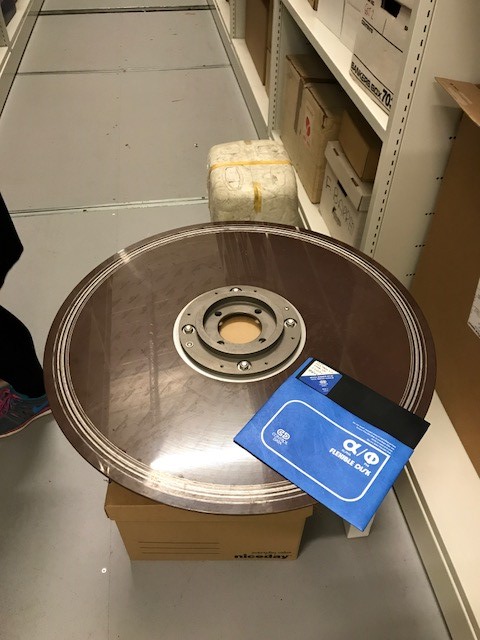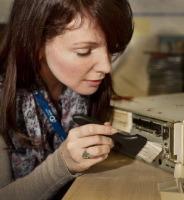Kirsty Lee is Digital Archivist for the Division of Library and University Collections at the University of Edinburgh, Scotland.
I’d like to start International Digital Preservation Day, by putting a conundrum out to the community. My colleague, Lorraine McLaughlin, here at the Centre for Research Collections in the University of Edinburgh, and myself are currently appraising a hybrid collection that documents the history of computing at Edinburgh University from the inception of the Edinburgh Regional Computing Centre (ERCC) in 1966, to its later incarnation the Edinburgh University Computing Service in the 1980s.
The ERCC was to have a considerable impact on computing services as we know them today. Following the Flowers Report in 1966 there was to be regional computing centres set up in London, Manchester and Edinburgh tasked with providing computing services for local university users, research council establishments and other universities.
 Edinburgh University was specifically to look at a major computing installation which, due to the dispersal of computing users in Edinburgh, wasrecommended to be built along multi-access lines and it was also tasked to “take a leading role in the development of conversational systems as a matter of national importance” (source: The History of the ERCC, 1986, Arthur Wilson). This clearly cemented Edinburgh as a pivotal location for advanced computing research and development.
Edinburgh University was specifically to look at a major computing installation which, due to the dispersal of computing users in Edinburgh, wasrecommended to be built along multi-access lines and it was also tasked to “take a leading role in the development of conversational systems as a matter of national importance” (source: The History of the ERCC, 1986, Arthur Wilson). This clearly cemented Edinburgh as a pivotal location for advanced computing research and development.
That said, during the course of our review of the 200+ boxes of paper records, floppy disks (of all three sizes), magnetic tapes and circuit boards we found something that we are struggling to describe. In advance of seeking help from our colleagues in the IT Infrastructure team (from whom the collection originated), I’m putting the conundrum out there for all to try and puzzle over.
The question I’m asking is…What am I?
This is a large metal disk, approx. 665mm in diameter, with quite pronounced grooves running around the edge as you can see in the image. We have two of these mammoth items. Not sure what they're made off, possibly steel as they're quite heavy.
If anyone has any suggestions please comment or email me at kirsty.chatwin-lee@ed.ac.uk. Should I find an answer I’ll be sure to comment myself, to put anyone equally curious out of their misery!
Kirsty Chatwin-Lee
Centre for Research Collections, University of Edinburgh

Comments